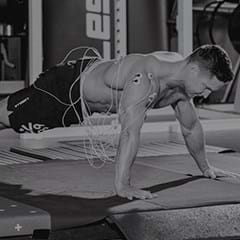If you’re learning a new language, should you get on your bike first? Possibly, at least according to a German study that showed cycling while learning a foreign language helped people remember new words better. True story. Researchers recruited around 80 monolingual German women and divided them into three groups. One group sat down for 30 minutes while listening through headphones to paired words, a common German noun and its Polish equivalent. Another group listened to the headphones after gently riding a bike for 30 minutes, and the third group wore the headphones while riding a bike for 30 minutes with light intensity. Those in the last group could remember the new words better than the other two groups.
It’s thought light-intensity exercise might create low levels of physiological arousal that could prime the brain for learning. However, the inverse may also be true – too much intensity could over-stimulate and divert the brain’s attentional resources. Learning Polish in HIIT classes, then, might not be such a great idea.
What does seem clear is that exercise and brain function are linked. An Irish study, for example, made a group of young, sedentary men look at a lineup of the faces and names of strangers. After a break they were asked to recall the names of the faces as they scrolled past on a computer screen. Some participants then rode a stationary bike strenuously for half an hour, until they were exhausted while the other half sat still. When both groups took the test again, those in the bike-riding group were better at remembering names.
So how much exercise, what type of exercise, and when? It’s complicated. Dutch researchers divided 56 schoolchildren between the ages of 10 and 13 into groups; one did their studies as usual without any exercise, another did 20 minutes of physical activity after a 90-minute class, and the third did exercise before and after class. The latter group did significantly better on attention span tests.
Implementing 20-minute exercise sessions before and after class might not practical for the average school, but every bit helps. A large randomized controlled trial in the US looked at the effects of daily after-school sports classes over a school year; by the end, the children who did the daily exercise were not only fitter, they were also better at ignoring distractions, multi-tasking, and retaining new information.
Research suggests regular aerobic exercise can boost the size of the hippocampus, the core of the brain’s learning and memory systems.
Similar results have been observed in adults. University of Maryland research involved physically inactive older adults being put on a 12-week exercise program of regular treadmill walking. One group had mild cognitive impairment and the other had healthy brain function, but by the end of the 12 weeks the memory and recall of both groups had improved. Using brain imaging, the researchers also showed improved neural efficiency among participants (basically, fewer neural resources were activated to perform the same memory task of identifying and remembering the names and faces of celebrities and famous people).
What is happening at a biological level has yet to be pinned down, but a number of studies have shown that regular aerobic exercise can boost the size of the hippocampus, the core of the brain’s learning and memory systems. Other research suggests exercise improves brain function by promoting the growth of a protein called ‘brain-derived neurotrophic factor’ (BDNF), which is known to promote the health of nerve cells and seems to have a role in improving memory.
Like a lot of early research, much of the BDNF evidence comes from studies involving rats rather than people. Brazilian scientists, for instance, found elderly rats that were put on a regime of short bouts of mild-intensity exercise (on a walking wheel) showed higher levels of BDNF in the hippocampus. Also, the elderly rats performed almost as well as young rats on rodent memory tests. If you’re reading this you’re not a rodent, and it’s worth keeping things context – Stephen Hawking has one of the best brains in the world, and he has managed to maintain it while spending much of his life in a wheelchair. Still, for those of us with more ordinary cognitive abilities the evidence seems pretty clear: the muscle between your ears responds to exercise just like the ones in the rest of your body.
If you want more tried, tested and true news from the leading edge of health and fitness sign up to get Fit Planet insights and advice straight to your inbox.
Follow the freshest thinking @fitplanetmag.







